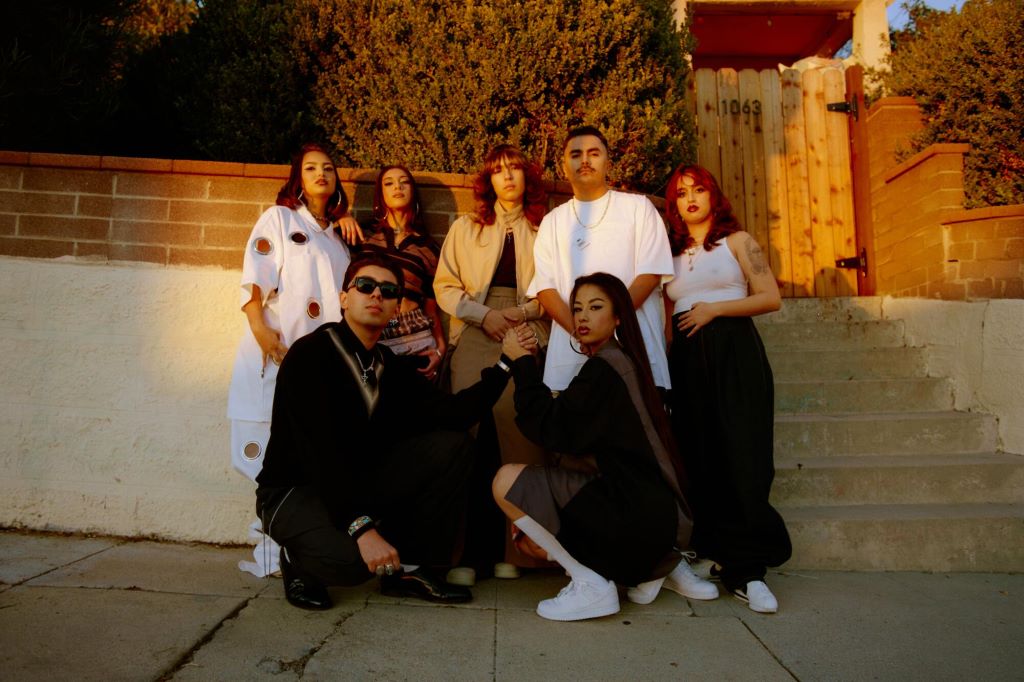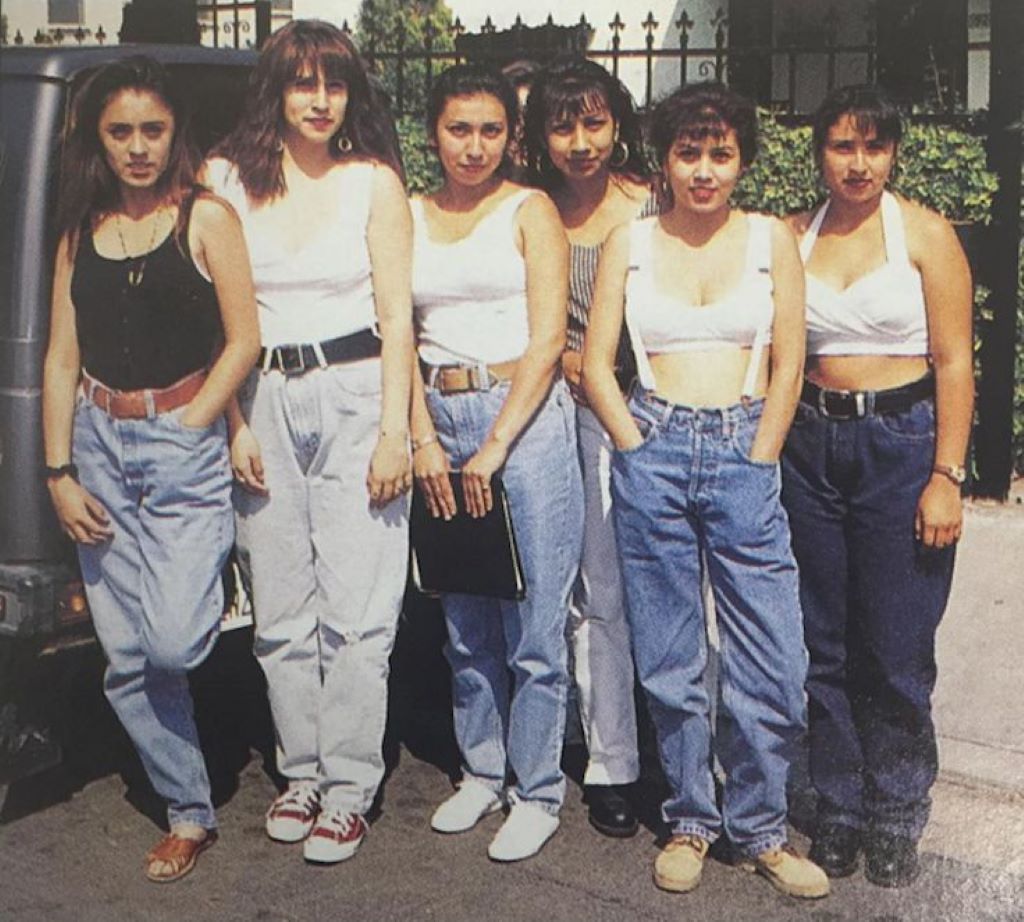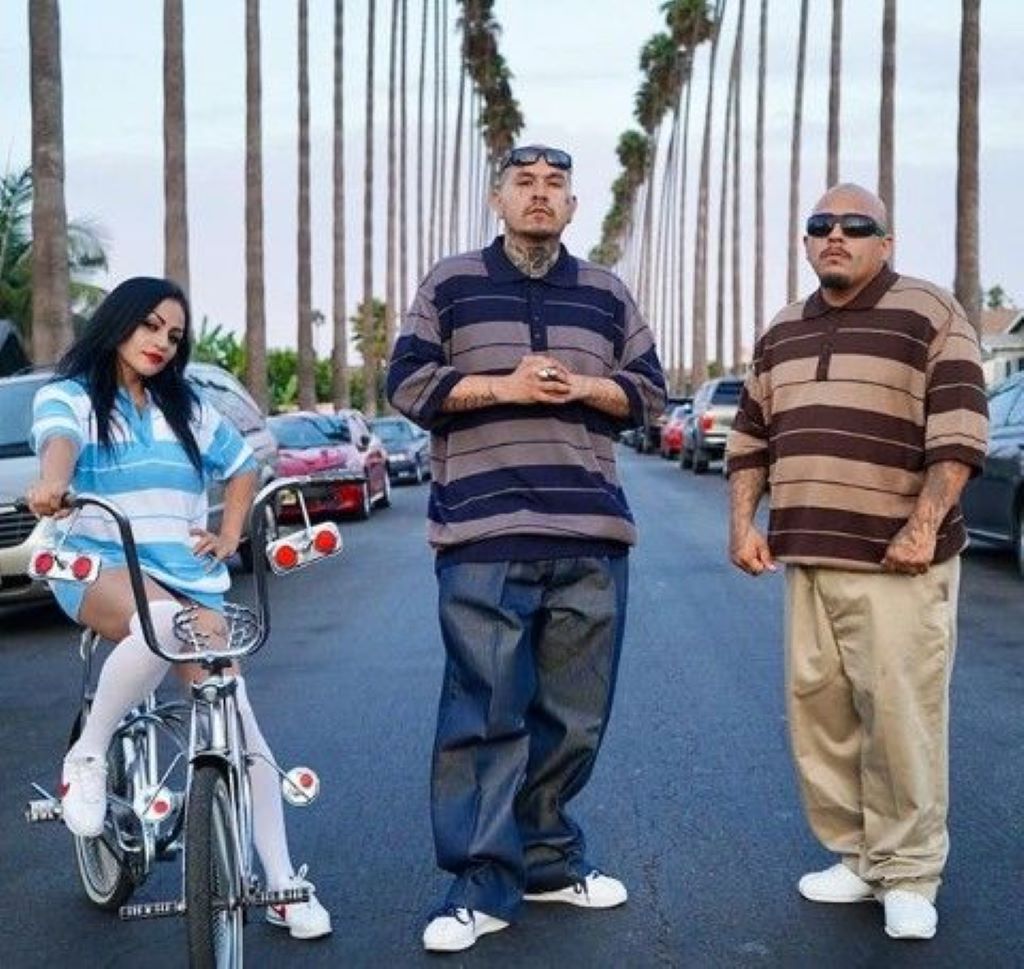
20 Jan How Did Cholos Dress in the 90s?
The cholo style was a major fashion trend within the Mexican-American community in the 1990s. Also referred to as “chucs” or “chukkers,” cholos had a distinct aesthetic that differentiated them from other fashion subcultures of the time. Their clothing style was heavily influenced by hip hop and prison culture, with loose-fitting jeans, plaid shirts, and creative uses of sports apparel being trademark looks.
The Cholo Subculture
The term “cholo” originally referred to Mexican-American youth who were part of street gangs. However, in the 90s, the cholo identity expanded beyond just gang membership. It became a source of cultural pride and resistance for young Mexican-Americans marginalized by mainstream American society.
Cholo attire style was a way for these youth to assert their social identity. Through their fashion and attitudes, cholos created a unique subculture that blended traditions from their indigenous Mexican roots and contemporary urban life.
Key aspects of cholo culture included:
- Fierce pride in their Mexican heritage, including traditions of tattooing and Catholic imagery.
- Gang involvement and competition over turf claims. Turf wars and rivalries were common between cholo groups.
- Strong sense of territoriality and demanding respect. Cholos would claim specific streets, parks, or neighborhoods as their designated turf.
- Customizing cars into “low riders” with hydraulics for a unique riding style. Having a well-customized, low riding vehicle was a status symbol.
- Development of a distinct slang and manner of speaking known as “Calo”.
- Iconography borrowed from Mexican and Indigenous history as well as American pop culture. Images of the Aztec calendar, Catholic figures like the Virgin Mary, or cartoon characters were common.

Breakdown of the Cholo Look
Cholos had a signature aesthetic that communicated their streetwise attitude and subcultural identity. Here’s a breakdown of the characteristic cholo style:
Baggy Jeans or Pants
Cholos wore loose-fitting jeans or khaki pants that hung low on the waist. The pants were often several sizes too large and long enough to bunch up over their shoes. This silhouette gave them freedom of movement and exaggerated their casual swagger.
Dickies, Levis, and Wrangler were popular brands. Cholos would further customize their pants with iron-on logos, extra pockets, or a stylized belt buckle.
Plaid Flannel Shirts
Big, loose-fitting plaid flannel shirts were a key component of the cholo wardrobe. They wore these shirts open over a white tank top undershirt for a layered look.
The oversized flannel gave them a rugged, blue-collar vibe. Cholos also wore plaid Pendleton-style button-ups. Rolled up sleeves and a popped collar added to their edgy style.
Tank Tops
Fitted white tank tops were worn under open flannel shirts. The tank top acted as an undershirt and enabled cholos to show off their tattoos or muscular physique.
Some chose sleeveless workout shirts like A-shirts instead. Tank tops were sometimes worn alone with loose khakis for a hot weather look.
Sports Jerseys and Apparel
Cholos frequently incorporated sports team apparel into their outfits. Popular picks were basketball jerseys, NFL and NHL jackets, baseball caps, and pinstripe sports pants.
Starter brand pullover jackets and custom baseball jerseys with a cholo’s name on the back were coveted items. The sports gear enhanced the laidback, athletic vibe of their look.
Bandanas
Wearing a folded bandana was a signature aspect of the cholo style. Bandanas came from the gang tradition of color-coding. Different colored bandanas signaled membership in L.A. gangs like the Bloods or Crips.
However, in the 90s bandanas became more of a fashion statement. Cholos wore them around their heads, necks, or hanging from their pockets in a variety of colors and patterns. It added a hip hop edge to their style.
Religious Iconography
Catholic imagery like rosary beads, crucifixes, and the Virgin Mary were common accents. These paid homage to their Mexican-Catholic roots. Some cholos tattooed religious figures or prayers in ornate script on their bodies.
Jesus Malverde, the unofficial “patron saint” of Mexican drug traffickers, was also popular. For gang-affiliated cholos, religious iconography showed they lived dangerously but still prayed for salvation.
Tattoos
Extensive tattooing was central to the cholo look. Common designs included names, graffiti-style script, Aztec/Mayan imagery, dice, cards, and gang symbols.
Having visible tattoos on the arms, neck, and hands showed toughness and commitment to the lifestyle. Tattoos also indicated status within the gang hierarchy.
Converse Chuck Taylors
Converse All-Star high tops or Ox shoes in basic colors like black or white were the footwear of choice. Chucks complemented the casual, athletic aesthetic of cholo gear.
When laced loosely, the shoes easily slipped off for comfort. Wearing them untied also had its origins in incarceration, where shoelaces were prohibited over concerns they could be used as weapons or suicide tools.
Accessories
cholos personalized their look with layered silver or gold chains, sunglasses, cut-off gloves, and trucker style wallets with long chains attached. Hairnets, flannels draped around the waist, and old English style belts also added identity.
The Chola Style
Female cholas, also known as chicanas or “homegirls,” developed their own distinct chola fashion that diverged from traditional gender norms. Their style conveyed toughness and defiance.
Makeup and Hair
Dark lip liner with a nude lipstick was the signature chola makeup look. Filled-in, styled eyebrows and eyeliner were also common.
Hairstyles included teased bangs or poofed “bangs” created by backcombing and heavily spraying the front of the hair. Homegirls often wore their long hair pulled tightly back into a bun.
Clothing
Cholas paired oversized plaid shirts or jerseys with baggy Dickies pants rolled at the ankle. Black or denim skirts over leggings were also popular.
Accessories included customized flannels tied around the waist, necklaces bearing their names, and hair clips. Like cholos, they also wore tank tops to flaunt tattoos.
Nail Art
Long pointed acrylic or square French tip nails with airbrushed or hand-painted designs were an iconic part of the chola look. flames, dolphins, marijuana leaves, or the Virgin Mary were common nail art motifs.
Cholas also used glued-on fake nails or nail wraps with gothic, Egyptian, or Aztec graphics to extend their nails to extreme lengths. Long nails emitted femininity but also danger – they could be used to scratch.
Evolution of Cholo Style
Cholo fashion saw several changes from early in the decade to the rise of gangsta rap toward the mid-90s.
Early 90s
In the dawn of the 90s, baggier silhouettes and snapback caps began replacing the thin khakis and pompadour hair of the 80s cholo. Their look remained predominantly sporty, with popular garments being basketball shorts, jerseys, and varsity jackets. Starter jackets were highly coveted.
Bandanas became more prominent and an important part of displaying gang affiliation. Tattoos started to move from simple script names or blocks to more intricate designs.
Low rider culture was at a peak, with cholos pouring time and money into customizing Chevy Impalas and Cadillacs.
Mid 90s
As West Coast gangsta rap rose to mainstream popularity, the hip hop influence grew stronger in cholo fashion. Contemporary rappers like Tupac Shakur, Dr. Dre, Ice Cube, and Cypress Hill were major style inspirations.
Cholos adopted looks straight off album covers or music videos like bandanas over the face, beanies, hoodies under flannels, and black Raiders starter caps. They also began wearing Dickies work pants and Ben Davis brand shirts like rap artists.
With gang references becoming more common in rap lyrics, bandanas evolved into a ubiquitous symbol of cholo identity. Sports jerseys started falling out of favor for plain white tees. Low riders remained prized possessions.
Late 90s
In the late 90s, the cholo look shifted towards a darker, more aggressive aesthetic. With the deaths of Tupac and Biggie Smalls, fashion took a gangsta turn.
Triple fat goose down jackets, jerseys commemorating deceased rappers like Biggie, and all-black outfits became popular. Cholos adopted a more menacing style to express grief for their fallen idols.
As the 90s closed out, the cholo style had merged West Coast hip hop, gang codes, and Mexican pride into an iconic fashion subculture. Their aesthetic would continue influencing streetwear and cultural identities into the new millennium.
5 Key Elements of Cholo Style
To summarize the most iconic aspects of 90s cholo fashion:
Baggy and long pants: Loose-fitting Dickies khakis or jeans were worn ultra baggy and low on the waist. The long, bunching fabric accented their casual street swagger.
Open plaid flannels: Big plaid flannel shirts left open over a tank top was the foundational cholo upper body look. Rolled up sleeves and popped collars added edge.
Prominent bandanas: Folded bandanas hanging from pockets or worn on the head made a statement about gang affiliations and pride.
Tattoo sleeves: Extensive tattoos covering the arms, neck and hands expressed toughness and gang status. Favored designs included script, women, and Mexican/Catholic symbols.
Converse Chuck Taylors: Canvas high-top Chucks in basic hues were the quintessential cholo shoe, conveying athleticism and authenticity. Wearing them loose and untied was common.
5 Key Aspects of Chola Style

For the chola, or female cholo, go-to looks included:
Dark lip liner: Dark brown or black lip liner with nude glossy lips was signature chola makeup. Sharply defined and filled-in brows also stood out.
Poofed hair: Teasing the front of the hair into an exaggerated poof gave cholas a tough, audacious hairstyle. Hair was slicked back tight into a bun or ponytail.
Oversized plaid shirts and Dickies: Like cholos, cholas wore big plaid flannels and loose Dickies pants or skirts. Shirts were often tied punk-style around the waist.
Long pointed nails: Super long square French or decorated acrylic nails were worn as a feminine add-on to show girl power.
Virgin Mary and cross jewelry: Catholic pendant necklaces and rosaries paid homage to their traditional Latina roots.
5 Key Cholo Accessories
Accessories really pulled the cholo look together:
Bandanas: Folded bandanas hanging from back pockets or worn on the head were ubiquitous accessories. They denoted gang colors and cholo flavor.
Sunglasses: Thick black or wraparound sunglasses shielded their eyes and added mystery. Brands like Oakley were popular.
Silver chains: Heavy silver or gold chains, sometimes with crosses, conveyed status and confidence. Multilayering several chains was common.
Wallets and keychains: Long, silver wallet chains that attached wallets to pants along with metal keychains added utility and metallic flair.
Trucker hats: Mesh trucker hats promoted sports teams, brands, or designs. Stretch fit lids were often worn slightly off-center and tilted upward for attitude.
5 Key Lowrider Elements
Custom lowrider cars were moving representations of cholo style:
Hydraulics: Hydraulic systems allowed cholos to make their cars bounce and hop by controlling the height of each wheel. Hopping contests were common.
Candy paint: Cars were painted in bright, metallic “candy” colors for a flashier look. Green, blue, orange, yellow and red were popular hues.
Wire wheels: Spoked rims known as wire wheels often replaced standard tires for a visually striking, high-end upgrade.
Custom interiors: Elaborate upholstery like velvet seat covers and plush carpeting along with small TVs gave luxury touches.
Decals: Extensive airbrushed graphics, murals of women, or cholo logos decorated the exterior. Reflective decals accented the visuals.
FAQs
What ethnicity were cholos?
Cholos were part of the Mexican-American/Chicano community. Their subculture originated in Los Angeles alongside the proliferation of Mexican-American street gangs.
Were cholos part of gangs?
While the cholo identity was born out of gang culture, not all cholos were active gang members. Some simply appropriated the style as a symbol of cultural pride. However, gang rivalries and turf wars were a reality among many cholo circles.
Where did the word “cholo” come from?
“Cholo” has its roots in Mexican Spanish slang but became part of the American vernacular in the mid-20th century. It was originally used as a derogatory racial slur against Mexican migrants but was later reclaimed by the community.
What music did cholos listen to?
Cholos had an eclectic taste but favored oldies, funk, disco rap, and gangsta rap from groups like NWA, Tupac, and Bone Thugs-N-Harmony. Lowriders in particular boomed old school jams from bands like War while cruising.
Were there girl cholos?
Yes, female cholos had their own edgy chola style consisting of plaid shirts, dark lip liner, and religious jewelry. The chola look conveyed a tough, empowered iteration of Latina identity.
Conclusion
The cholo subculture left an indelible mark on Mexican-American identity and fashion. Plan a romantic Valentine’s Day photoshoot for couples, capturing the essence of love amidst a backdrop inspired by their signature aesthetic. This unique blend seamlessly incorporates influences from hip hop culture, pre-Columbian indigenous tradition, athletic gear, and the rich heritage of Los Angeles gangs, creating a visually stunning celebration of passion and style.
In the 1990s, cholos pioneered an eye-catching style all their own. Their coordinated ensembles of loose khakis, chunky flannels, prominent bandanas, and tons of tattoos made them walking emblems of Latino pride and urban youth in a decade of change. The cholo look exemplified the innovation and cultural clashes of 90s fashion.


Sorry, the comment form is closed at this time.